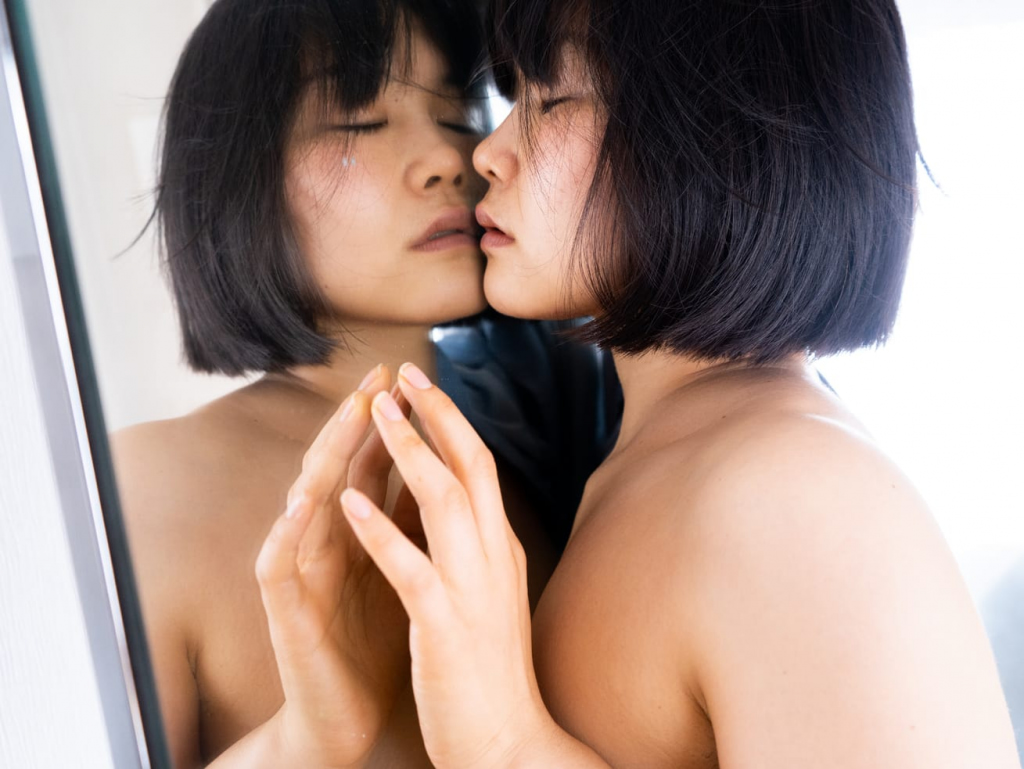“Close your legs” or “sit like a lady” were phrases I often heard as a child. Back then, I didn’t identify myself with terms like “lady” (I hated it, actually) and I had little to no notion as to what “woman” or “girl” was supposed to mean. But I learned quite quickly (as many of us do), to associate “woman” or “girl” with something “bad” or “less than.” I also learned that other people’s perceptions of me were wildly out of my control. It fell to me to find measures to counter, contain and control myself as a “woman” or “girl” as much as humanly possible.
It was with these thoughts that I sat down with model and friend Maki to hear about her practice as a nude artist in Tokyo. We aimed to further investigate the concepts surrounding femme bodies, misogyny and art. As a nude model in Japan, Maki receives a garden variety of responses from her followers on Instagram. Some people are supportive, sending her messages about how she’s inspired them to be more self-loving. Other people, however, share their opinions about her body, ask for sexual photos and favors, or lambast her for being naked. But who Maki is and why she does what she does is her story to tell.

On Self-reflection
Maki and I were seated side by side in my narrow bedroom, sipping ginger tea, when she told me her whole story.
“Sometimes I don’t know my own reflection,” she says, thoughtfully, as if combing through images in her mind. She pauses. “I believed I was a monster.” Maki tells me about her childhood. An abusive parent who regularly threatened her with violence and the bullies at school. For 19 years, Maki survived an environment that taught her she was terrible. So, she lost the ability to internally and externally recognize her true self. This manifested in a detachment from mirrors and photos. She completely lost the ability to see herself in them. “I didn’t know who I was, and I knew I had to find myself,” she says.
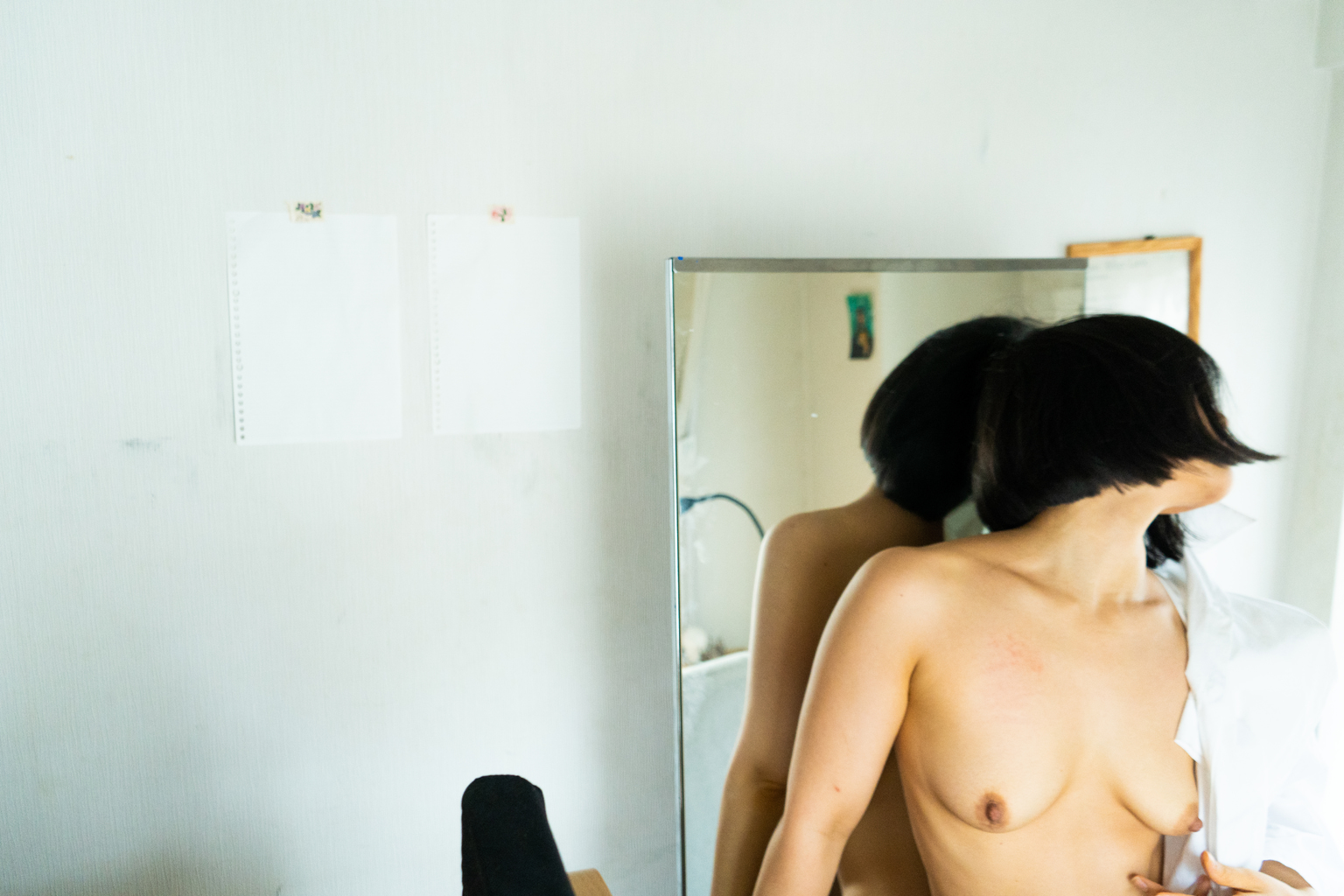
Self-discovery Through Caring for Others
Maki’s route to self-discovery unfolds in two very different and entirely separate spaces. The first world is that of a hospice clinic for the elderly in Saitama where she works as a caregiver. Patients at the clinic soften in Maki’s presence, at her touch, or at the sound of her voice. One coworker recently told her, “I love working with you because the patients light up when you’re around.” Speaking of this makes her own movements and tone soften automatically. She tears up when relaying the harrowing true nature of her profession, which is to take care of people who are in the last stages of their life.
A former patient of Maki’s could only communicate through blinking her eyes. The woman had been abused for “being different,” both at home and at clinics, but Maki came to her rescue. “I know what it’s like to be treated like a monster. And nobody should be treated like that because they are perceived as different. Everybody has a soul.” With Maki by her side every day, the elderly woman learned to smile again before passing away in the night.
Perhaps testament to the genuine, gentile work Maki does with her patients, it was there, in one of her patient’s bedroom mirrors, that she happened to catch a glimpse of her reflection for the first time in years. She thought, “Who’s that? That’s not me.” It slowly sunk in that the person staring back at her was actually her.
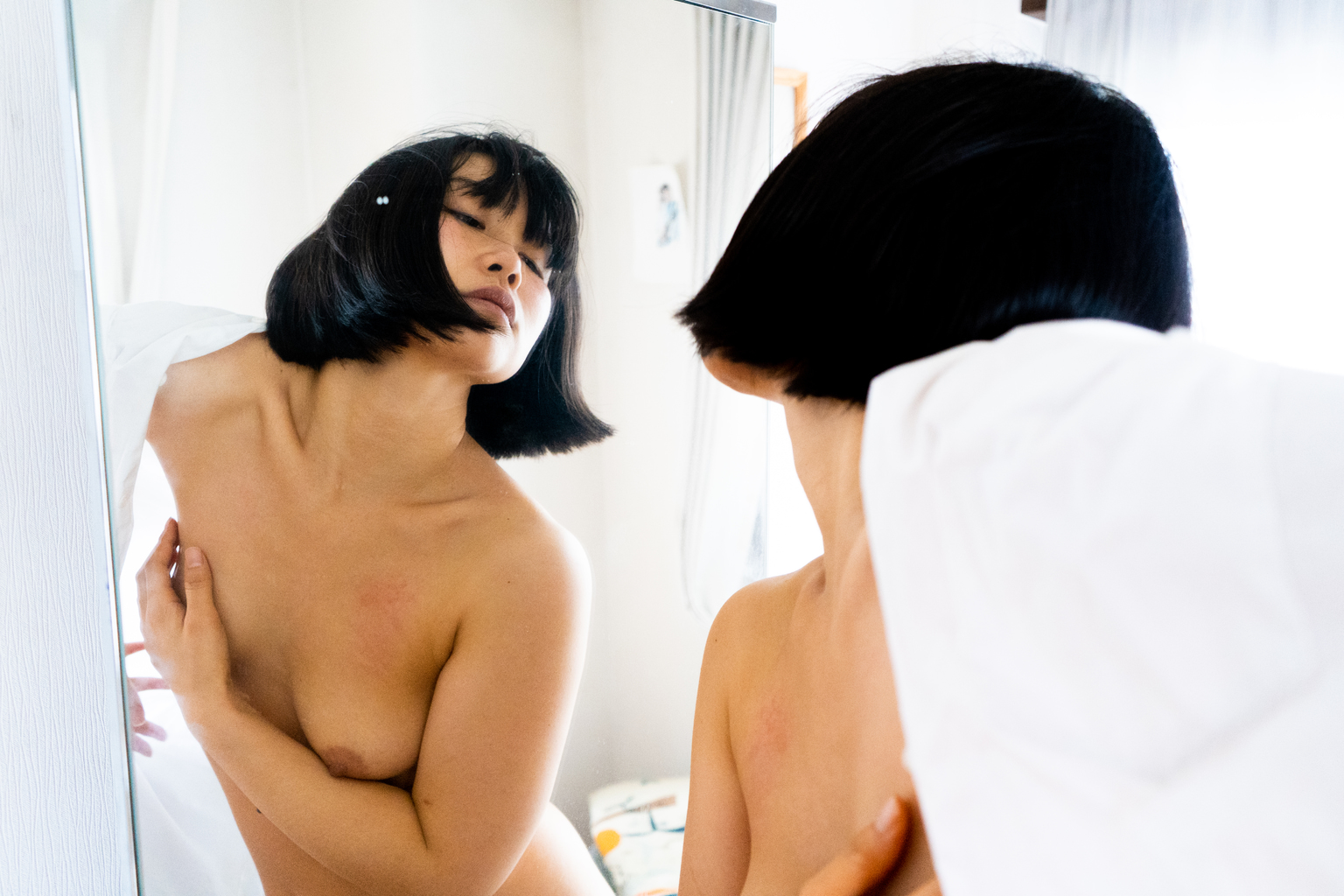
Self-discovery Through Photography and Modeling
The second world where Maki has begun to find herself is the medium of photography and modeling. After posting a selfie on social media a few years ago, Maki was scouted by a photographer and invited to do a shoot. She was shy about posing at first, so the photographer took a candid photo of her while she was fixing her shoes. “I saw myself for the first time in that photo,” she says. The picture captured a shadow across her face, partially hiding something she can rarely fully see herself. From that moment on, Maki decided to dive into scenes of image play, invigorated by the hope of discovering a self she didn’t yet know.
Maki describes herself as both hidden and seen, looked at and looking. In most shoots, nothing covers her body except her arms, or the gentle brush of her hair across her face. “My style is to hide behind my hair. And that’s how viewers can feel what they feel,” she explains. She thrives in the subtle role shift between subject and object and is overjoyed when other people share their experiences with her. She continues, “Some people tell me that because of me they started to take selfies. They are just trying to know and accept themselves.”
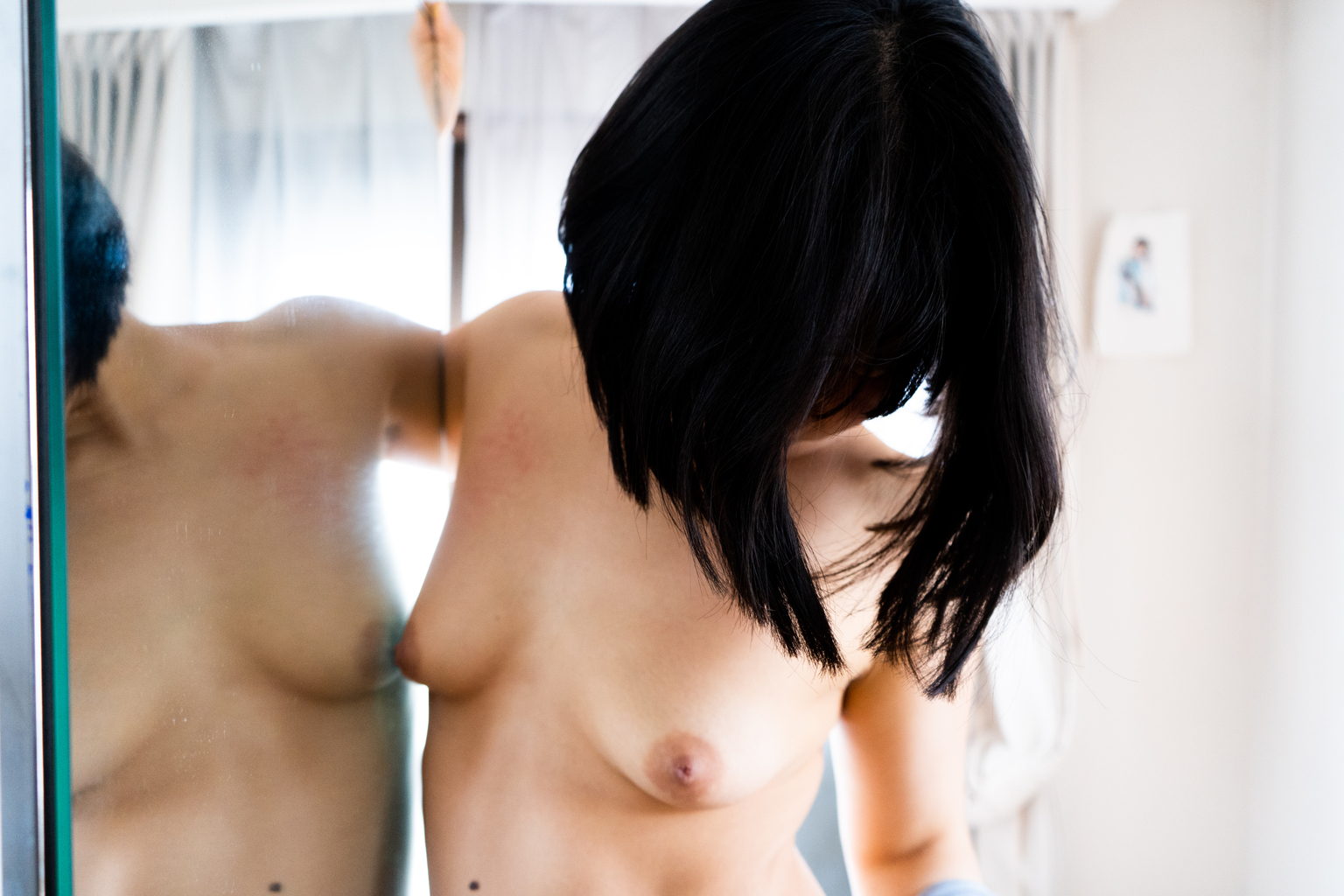
The Radical Notion of “Being Yourself”
Through her ephemeral photos, Lacan-esque philosophy and personal stories on Instagram, (which read more like confessions), Maki introduces the radical notion of being oneself. The bare bones of vulnerability. “I don’t feel I should be beautiful,” she says. “I’m this.” She wants other people to learn to say “I am this” without other expectations. “Don’t think about anybody else’s way of thinking,” she adds.
She relates that she feels outside her body most days. Unless she’s modeling, in which case she can become fully present, or “connected.” It’s within a photo, when the fragmented parts of her are glued together for just a few moments, that she can finally see herself, almost.
When I tell Maki that I find her “brave,” she replies, “I don’t think taking off your clothes is a brave thing. It’s risky, yes,” she adds. She explains that in daily situations where she must wear clothes, she’s very focused in her mind. Almost stuck in her head. “It’s difficult for me to wear something in front of a camera,” she says. Clothing presents itself as a material substance, a commercial item, a way of covering oneself and for Maki, a creative block. “I try to be who I am in front of the camera, not thinking about anything else. I’m just focusing on myself. And I’m focusing on my emotions, how I feel, who I am. I’m not sexual. I am me.”
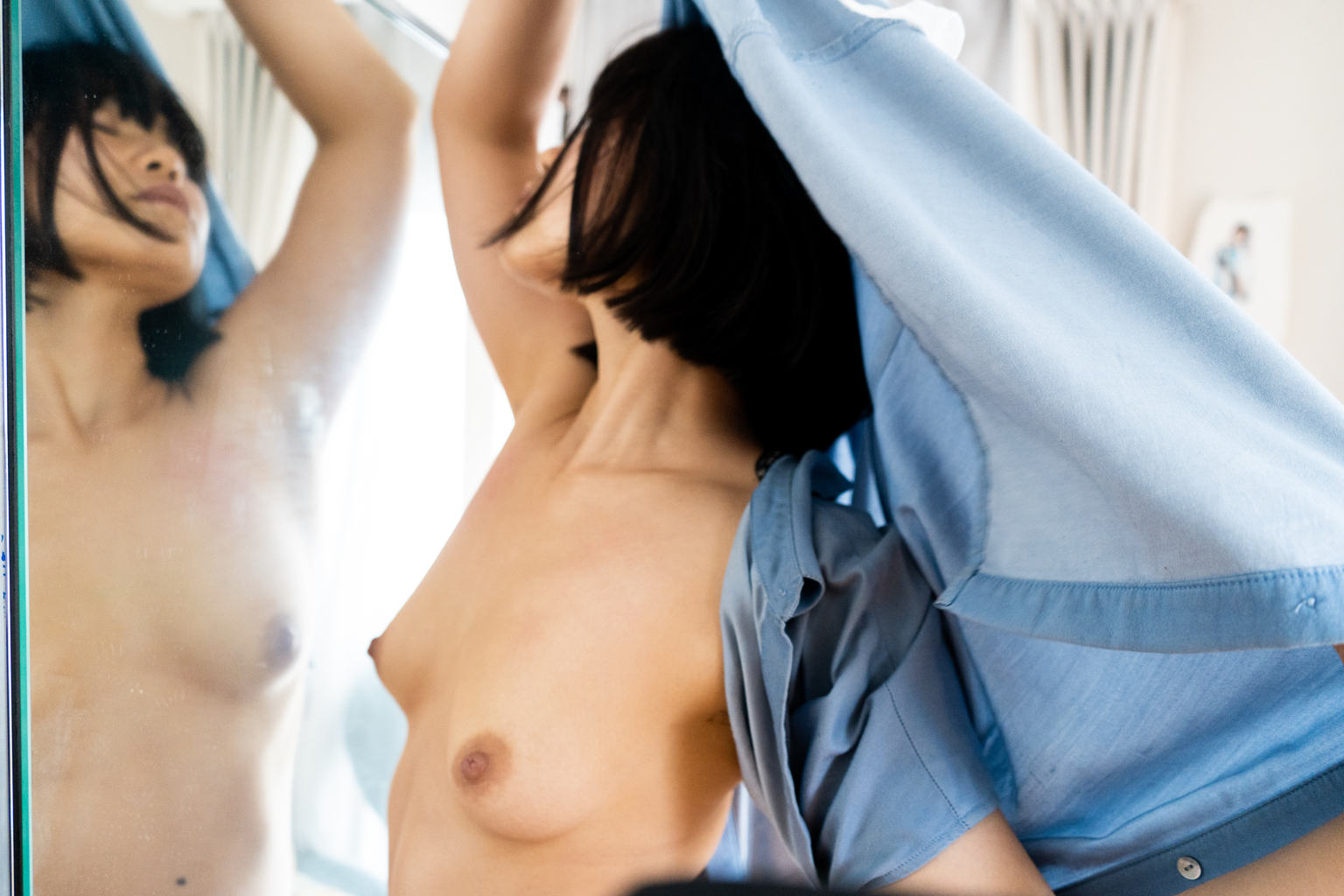
The Struggles of Being a Nude Artist and Model
Some photographers in Tokyo pressure her to take pornographic-styled photos, which disappoints Maki greatly. “It’s not for me,” she says. “They ask me to open my legs and pose in ‘doggy style,’ and I just tell them I don’t think that angle is going to work.” Several male photographers have informed her that she “isn’t pretty” mid-photo shoot. To this, she sighs, because she can’t escape the fact that it hurts. Even if she knows what they’ve said is mean-spirited, manipulative, ignorant and untrue.
The struggle is real. Misogyny and toxic behavior can be very painful and traumatically life-altering. It’s also an unproductive way to make art. What use are any of these photographers’ tactics beyond serving their need to reassert dominance? Maki hopes that will change. By continuously taking control of her own image, Maki subverts the male gaze, undermining its power by confronting it with her vulnerability and aesthetic choice. She is not immune to the male gaze’s authority. Are any one of us? And yet she faces it day to day, bearing her secrets to a public space. Revealing the expectations people put on her, reflecting back to us the pain and objectification inflicted upon her. And all the while hoping that in return that some people will “get it” and begin their own meandering journeys towards self-discovery.
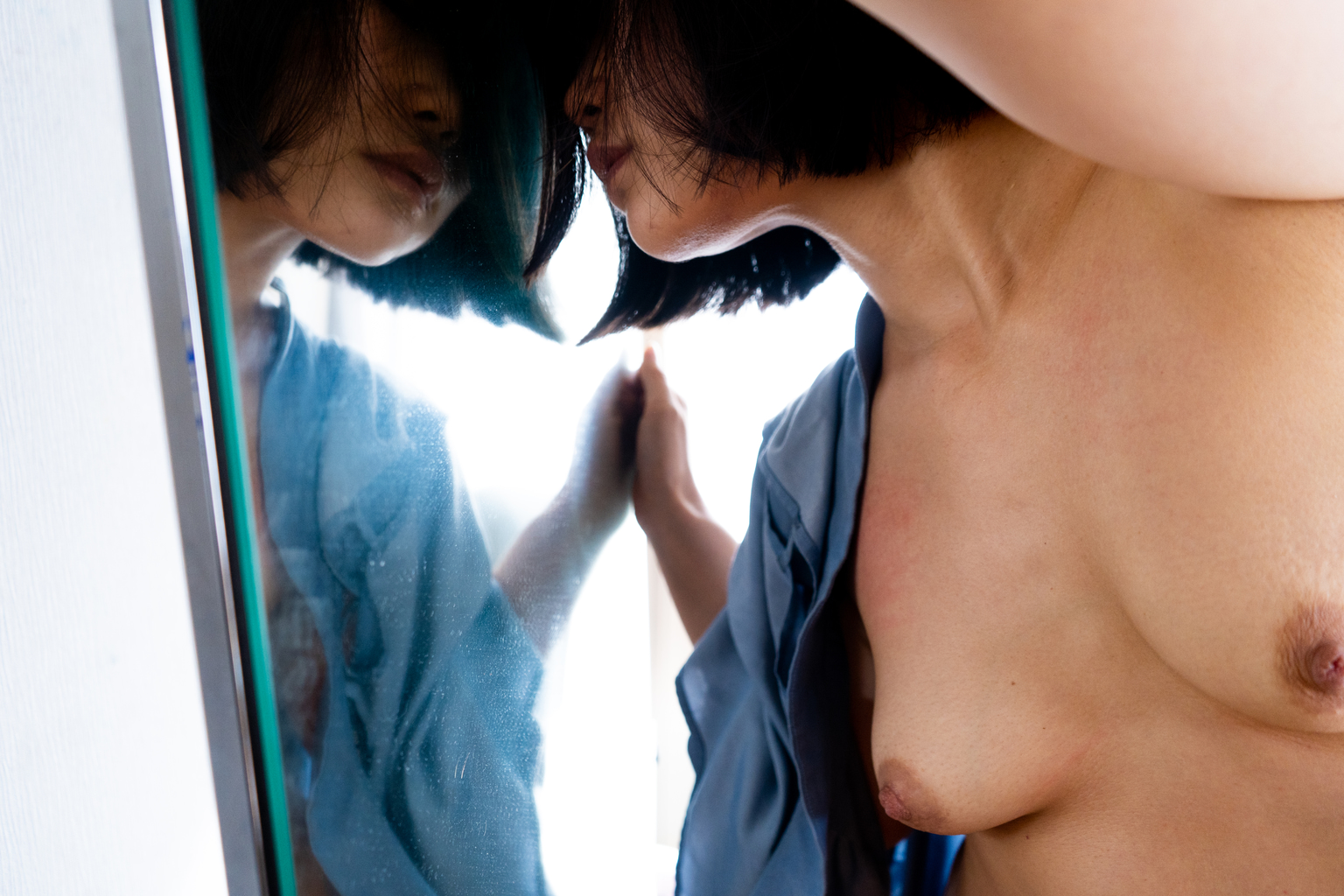
“I just want to make connections and for people to be nice to one another,” Maki says, “For people to see one another as they are.”
The Possibilities of Art That Heals
This form of art—hand in hand with the ripples of resistance it carries—paves the way for a more wholesome practice. The possibility of an art world that bridges gaps and heals, instead of one that threatens and perpetuates disembodiment. What does the world look like when relieved of its patriarchal and oppressive thoughts and systems? Maki shows us its potential. Like a dancer on stage, she moves effortlessly, finding herself wrapped up in moments where time and space can’t touch her. Suspended, perhaps forever, in an emotion of her choice.
All photos by Jes Kalled.
You can see more of Maki’s nude artist and model work on her Instagram.
Read more:
What’s It Like to Be a Life Model in Tokyo?
Singer, Model and Cosmo Japan Cover Girl Laura Ribeiro: “I had to convince people that I am lesbian”

